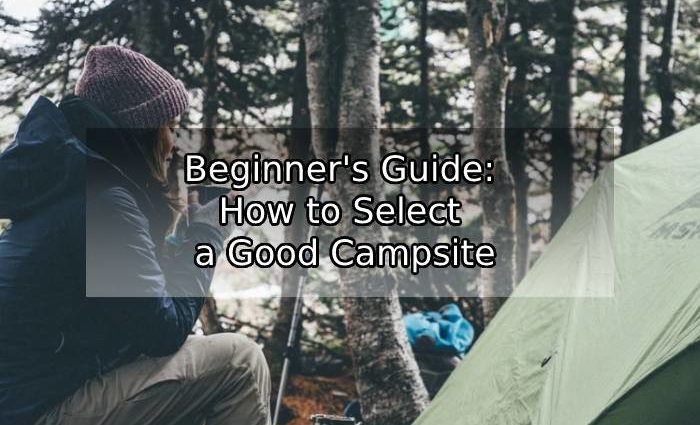Once you’re on your camping trip, you need to figure out how to choose a campsite. don’t wait until dusk to decide where exactly to set up your tent. Not only is it difficult to pitch a tent and organize your belongings in the dark, but you may end up rushing and picking an ill-advised site.
It’s unethical, and sometimes illegal, to move brush or trees to accommodate your site needs, so find a naturally good spot. Keep these factors in mind when picking a site:
- Ground quality: Look for a nice spread of land without too many rocks or tree roots. Check the moisture of the ground: if you kneel and your knees get wet, imagine how wet you’ll be after sleeping on it for a full night. Avoid meadows, as mossy ground tends to act as a sponge and take a long time to dry. If you plan to build a fire, though, be equally careful about campsites that are very dry, especially if there’s a lot of flammable dry grass or pine needles.
- Slope: Always pitch a tent on level ground if possible. If you can’t find a flat area, sleep with your head higher than your feet, because when your head is lower, the chances are greater that you’ll sleep badly and wake with a headache.
- Elevation: Pitch your tent on high ground that has good drainage. Camping in a ditch or depression might protect you from wind, but if it rains, you’ll get drenched. Worse, a sudden downpour can cause flash flooding in low areas, which can be dangerous or even life-threatening.
- Sun and wind exposure: An ideal campsite will get sun in the morning and shade in the afternoon. Camping on the east side of a slope will give you good morning warmth and shade during the hottest hours of the day. In hot weather, choose a site with many trees for more shade. Conversely, choose lightly shaded areas in rainy weather; the extra sun will help your equipment dry faster. A dense bank of bushes or nest of pines will provide good cover from winds. Always avoid camping near dead trees, which can fall unexpectedly, and lone trees, which attract lightning.
- Insects: To keep bugs at bay, choose a site with a breeze, and avoid swampy or grassy locales and mosquito-attracting stagnant water. Look at the ground carefully to make sure you don’t set up on an anthill.
- Proximity to water: Though a water source is necessary for drinking, cooking, and bathing, being too close to a body of water can be problematic. Standing water attracts bugs, and camp activities may cause a runoff of dirty water and other substances that may contaminate water. Be sure your campsite is at least 200 feet away from the nearest lake, river, or stream.
Once you’ve chosen a campsite, delegate tasks among your team to quicken campsite setup. Assign different campers to pitch tents, unroll bedding, put packs away, hang rope, and set up your food preparation area.



Comments are closed, but trackbacks and pingbacks are open.